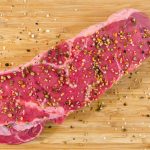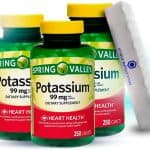Here’s how a solitary substance having absolutely no calories could be such a significant reason behind gaining weight in addition to colossal health challenges. How you will detect the disguised sodium to safeguard your health.
Sodium is a huge cause of gaining weight and frequently a cause for why the numbers on your scale are not heading down. The typical American consumes two times the quantity of sodium they ought to have on a daily basis, resulting in gaining weight, water retention, as well as the being unable to get rid of persistent weight. Sodium may also cause you to feel more hungry and also thirstier, check the nutrition product labels for high salt amounts and select fresh over commercially prepared as well as restaurant meals. You will see puffiness around your face and mid-section decrease rapidly by merely reducing your salt consumption and selecting more natural food items.
It’s really no mystery that a high-sodium consumption increases blood pressure levels, which can cause a greater possibility of cardiac arrest and strokes. And new research has shown that sodium is actually even more hazardous than many of us believed. Overeating salt continues to be linked to cancer, dementia, osteoporosis, along with other significant health concerns. Additionally, it can add inches to a person’s midsection.
According to these studies, the federal government is reconsidering its sodium recommendations. The newest reasoning: Adults should ingest no greater than 1,500 milligrams of salt each day (two-thirds of a teaspoon), down from the earlier restriction of less than 2,300 mg.
This modification indicates that Us consumers are significantly overdosing on sodium, consuming 3,436 mg a day. That’s more than double the amount recommended. Where is so much salt originating from? The most significant problem is not the ubiquitous salt shaker, rather it’s the sodium that’s already within your food. The primary contributors are actually highly processed in addition to commercially prepared foods, which pack in sodium for flavoring but in addition for texture and color and also to reduce spoilage. Around 80% of the salt in our meals can be found in the mass produced cookies, crackers, frozen dinners , cereals, soups, and tomato sauces we consume at home. And that also doesn’t include take out along with restaurant dishes.
Here is how to begin decreasing salt in what you eat:
Eliminate sodium coming from recipes whenever you can. You can actually omit the sodium in numerous recipes, which include soups, casseroles, chili, stews along with other meals that you prepare at home. Search for cook books that concentrate on reducing hazards of high blood pressure levels and also heart related illnesses.
Consume fresh food. The majority of fruits and veggies are naturally low in salt. Additionally, fresh meat is lower in salt when compared with cold cuts, bacon, hotdogs, and sausage. Purchase fresh or frozen chicken or beef that has not been infused with a salt containing fluid. Check out the ingredients label or question your current butcher shop.
Choose low-salt products. Should you choose to purchase processed food, select the ones that are labeled “low sodium.” Even better, purchase ordinary whole-grain rice and pasta rather than types which have additional spices.
Utilize sodium alternatives sensibly. Several sodium alternatives or light salts possess a combination of table salt along with other substances. To accomplish this recognizable high sodium flavor, you might use an excessive amount of the substitute and get far too much salt. Additionally, numerous sodium alternatives include potassium chloride. Even though potassium can decrease a number of the concerns from excessive salt, an excessive amount of potassium could be unhealthy, particularly if you have got a kidney ailment, congestive heart failure or elevated blood pressure levels that create potassium retention.
Restrict usage of salt-laden condiments. Soy sauce, ketchup, salad dressings, sauces, dips, mustard and relish all include salt.
Make use of natural herbs, spices along with other seasonings to flavor your meals. Take advantage of fresh or dehydrated herbal plants, spices, or the zest from citrus fruits, and fresh fruit juices to perk up your foods. Sea salt, unfortunately, is not a good alternative. It’s got approximately the same level of sodium as table salt.
© 2015 by Overweight.net. All rights reserved. No part of this document may be reproduced or transmitted in any form or by any means, electronic, mechanical, photocopying, recording, or otherwise, without prior written permission of Overweight.net.








